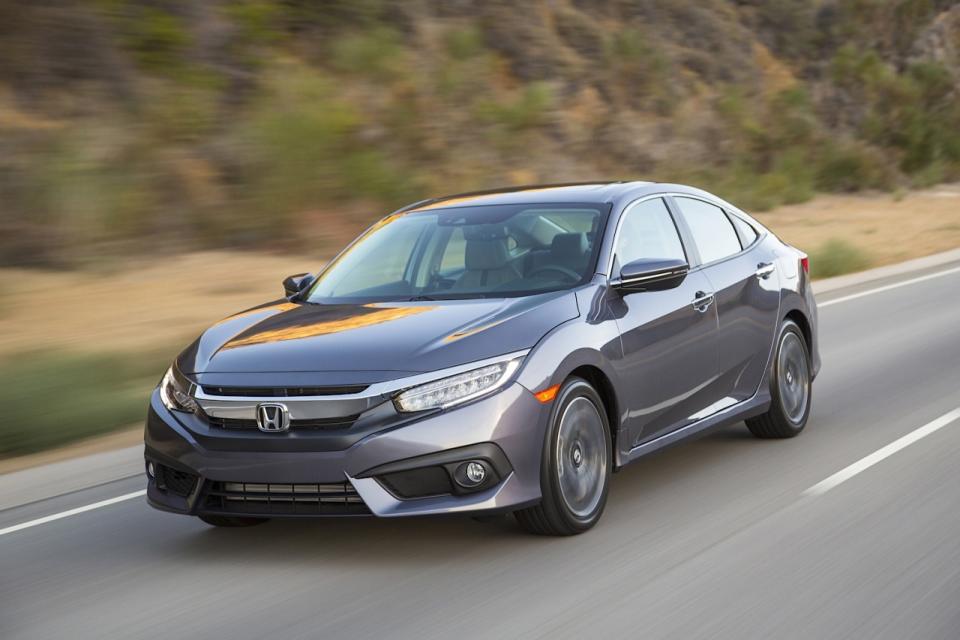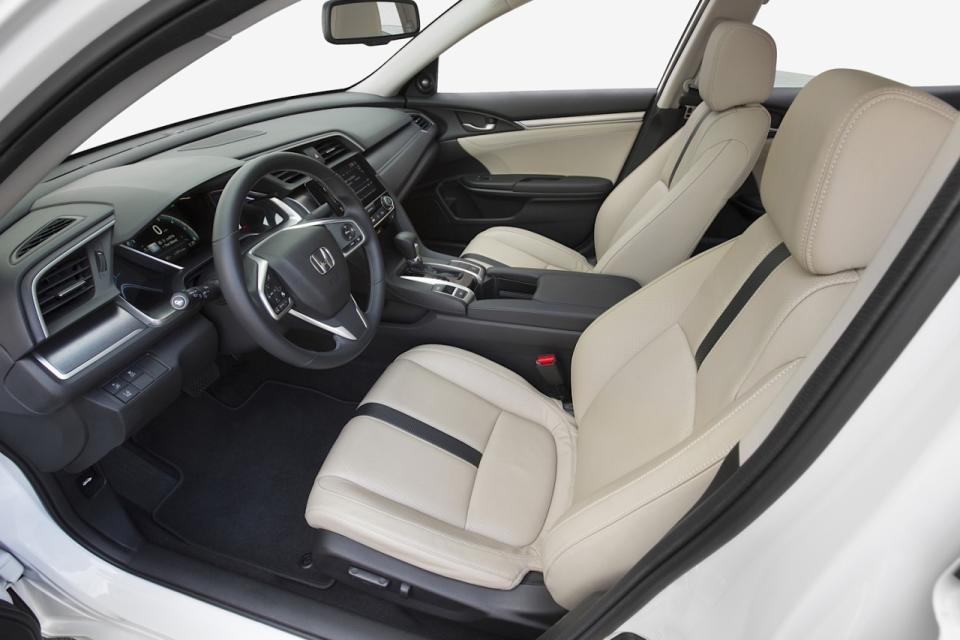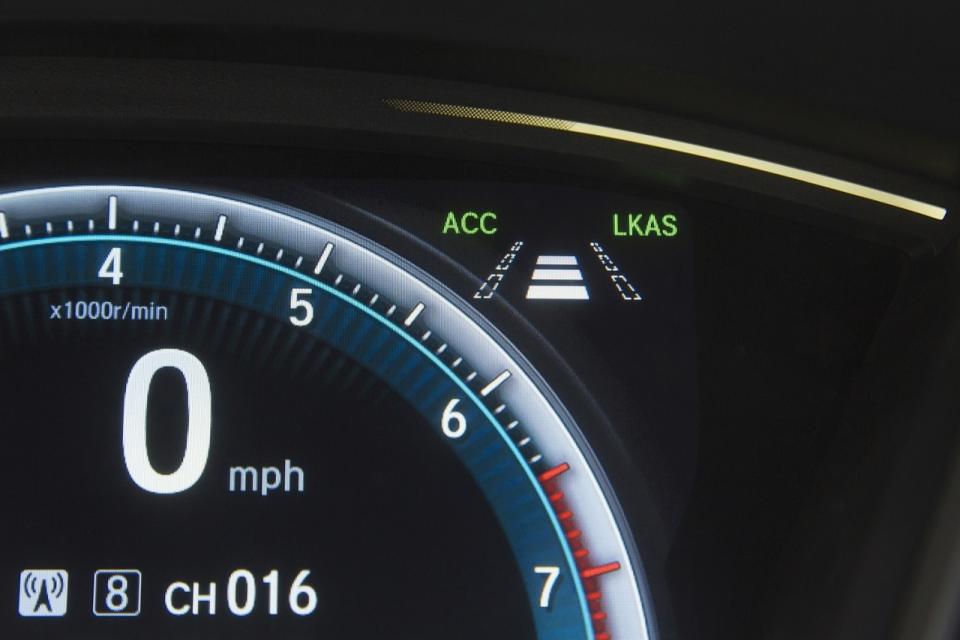2016 Honda Civic: First Drive

A complete re-engineering transforms Honda’s stalwart compact car from a middle-of-the-road option into a class leader.
What is it? A four-door compact sedan. There will be a coupe, a five-door hatchback, and Type-R derivatives, as well as a performance Si trim.
Price range: $19,475 to $27,335
Competitors: Chevy Cruze, Ford Focus, Hyundai Elantra, Kia Forte, Mazda3 and Toyota Corolla.
Alternatives: Subaru WRX, Toyota Prius, Volkswagen Golf
Pros: Comfortable and composed ride; plush, spacious interior; good fuel economy; and relatively fun to drive.
Cons: Peppier than its predecessor, but could use an even bigger boost of power.
Would I buy it with my money? Yes. Honda has done an exceptional job evolving this car and recapturing its mojo.

The Honda Civic has always been a popular choice for car buyers looking for simple, affordable and reliable transportation. The Japanese carmaker has sold more than 10 million of them here in the United States, and 35 million worldwide since its introduction in 1973.
Recently, however, the shine has worn off. Back in 2008, the Civic accounted for more than 15 percent of all compact car sales (almost 340,000 cars) in this country. Last year, that figure slid to less than 13 percent, or about 326,000 cars.
So why is the Civic losing traction? The competition simply caught up. The current model, which hit the streets in 2012, was a disappointment, universally panned for lackluster looks, performance and amenities. Even a hasty redesign in 2013, which was meant to give the car an infusion of sizzle, didn’t make the grade, especially when compared to competitive models like the Ford Focus and Hyundai Elantra.
So when I went to test the 2016 Civic recently in Northern California, I was skeptical. Was Honda going to launch another ho-hum redesign so it wouldn’t lose any more market share by offending “core” customers?
The answer: A hearty hell no.

Honda execs say this is the most ambitious redesign of the Civic since its inception, and I’m inclined to believe them. It’s the first American Honda to feature a turbocharged engine. It performs better, offers more luxury, and lots of new technologies compared to the outgoing version. And for once Honda has re-engineered the Civic to reignite an owner’s enthusiasm for driving.
The 2016 Civic has slightly larger footprint than its predecessor; two inches wider and one inch longer. The sheet metal underwent a total revamp, giving the car a fastback style profile, complemented by shaving an inch off the ride height to give it a more athletic, aggressive stance. Cosmetically, it looks downright radical compared to the outgoing model.
Though we didn’t measure, Honda engineers swear there are 3.7 cubic feet more interior space and 2.6 cubic feet more trunk space, making this Civic the largest in the compact car segment. As with the previous model, front seat passengers have plenty of room and the seats themselves are comfortable and supportive. Rear-seat passengers also get a comfy space to place their bottoms and get two inches more legroom. While the latter is appreciated, the backseat is still cramped for anyone six-foot or taller.

Compared to the rest of the field, the Civic’s trunk looks cavernous; big enough to haul enough luggage for a long journey, or several golf bags for a Saturday on the links.
Following in the footsteps of rivals, Honda upped the ante in the cabin, offering more luxury features than ever before, and finally boosting the quality of materials throughout.
Most notable, the Civic lineup joins the freshened 2016 Accord in offering smartphone integration with a new, 7-inch touchscreen that is available with both Apple CarPlay and Android Auto. Both allow your smartphone to seamlessly sync with your car’s infotainment system and actually take control of it, allowing you to make calls, text messages, access maps and navigation apps.

Also on tap is the Honda Sensing suite of high-tech driver assists. Automatic emergency braking, lane-keeping assist and, for the first time in a Honda, adaptive cruise control that will operate down to a full stop. (Can a fully autonomous Civic be that far off?) Surprisingly, it will be available on all trims:
Under the hood, you have a choice between two all-new four-cylinder engines: a base 2-liter and a 1.5-liter turbo. Both can be paired with a 6-speed manual as well as a continuously variable transmission. The 2-liter will develop 154 horsepower and 138 lb-ft of torque, while the 1.5-liter turbo delivers 174 hp and 162 lb-ft of torque. Though we were unable to verify, Honda says both engines will deliver 31 mpg in the city, and more than 40 mpg in highway driving (35 mpg combined). An improvement of 1 mpg city and up to 2 mpg highway.

The Civic has long been one of the better-driving cars in its class, and that hasn’t changed; its ride is still comfortable and composed. But the new version has recaptured the sporting feel that had gone missing. By tweaking the chassis and suspension a little, Honda engineers were able to minimize body roll, making the vehicle more stable when tackling tight corners. I was able to confidently push through the eastern Santa Monica Mountains in Southern California, and could do so at speeds somewhat higher than those posted, without feeling like the car would heel over on its side.
Not all is ideal, though. Power is still a little underwhelming even though the car has more get-up and go than the previous model, and both engines deliver the goods when taxed (they work hard for it). Even so, both left me wanting more.
The performance of the CVT is commendable. It swiftly downshifts when you need quick acceleration, unlike some other CVTs that seem to produce more noise than action. I preferred the available six-speed; that gave me more control when driving aggressively. But most buyers will be happy with the CVT’s operation.
I walked away convinced that Honda has a winner here. For the first time in years, the Civic ticks all of the boxes: affordable, luxurious, efficient, nimble and tech savvy. What more could you ask for from a car that starts at less than $20,000?

 Yahoo Autos
Yahoo Autos 